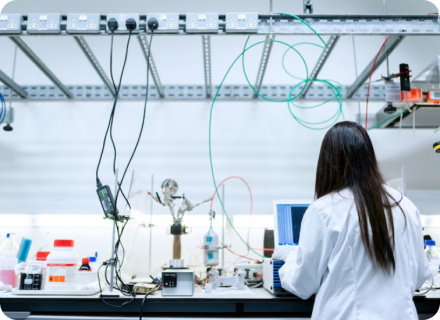The COVID-19 Pandemic Is Not Over: Infections Matter
As we enter the third year of the COVID-19 pandemic, many countries are lifting protections against SARS-CoV-2 even while infections remain high and are in some instances increasing. This situation is not sustainable. Lifting the protections without proper mitigations facilitates transmission with dire consequences: more deaths, long COVID and social, economic and political disruptions.
Again and again, public authorities have repeatedly said that the pandemic is over. But the Alpha, Delta and Omicron variants proved otherwise. Unless people become completely indifferent to dying prematurely or being sick regularly, or that we change infrastructure and behaviors, there is no way we can live normally with a so-called endemic COVID-19. Until then, we have to implement measures to prevent the exponential spread of the virus.
As of the 18th of March, there were some 1.8 million reported infections per day worldwide according to Our World in Data. The sub-variant BA.2 has entered the scene, being as different from Omicron (BA.1) as Omicron was with Delta., We know there are cases of reinfection less than a month after the last infection. While Omicron was already showing vaccine evasion, it appears to be even worse with BA.2. Much of the reason why Omicron seems mild is because in many countries the population was highly vaccinated and – luckily – vaccination protects well against severe disease. The situation in Hong Kong, however, should warn us against any complacency towards the virus in countries that largely rely on vaccines. The protection they currently provide in reducing severe disease depends on uniformly high coverage and repeated boosting, and has not protected some vulnerable individuals,,.
SARS-CoV-2 is an RNA virus that mutates very rapidly. It also has the ability to make big changes through recombination events between variants, and even events where it exchanges RNA with other coronaviruses. When given a large playing field of mutations across many people, the virus gets plenty of chances to come across mutations that increase its fitness, leading to higher infection rates. That is a major reason why it is so important to control the number of infections and slow down the emergence of variants. And so far, vaccines do not adequately help in limiting transmission. Consequently, we need other measures that will stop transmission in a controlled manner.
There is still a widespread belief that there is some kind of tradeoff between virulence and transmission. As viruses get better at transmitting they would be less virulent. This theory has been debunked by Anderson and May.,,
The belief that infections do not matter as long as hospitals are not full is not sustainable either. First, when hospitals are running at almost full capacity, it exhausts health workers (including outpatient care) and puts them even more at risk of getting infected, further adding to the health system struggle. Then, a hospital-focused vision does not consider the individual and societal impact of the infection consequences, such as long COVID and potential sequelae. Long COVID is now a very well documented issue. It affects a significant proportion of those infected, between 10 and 50%, depending on measure and duration, and can occur after mild or asymptomatic forms of the initial disease. Even more suffer organ damage and loss of cognitive function,,,,,. Severe long COVID occurs in about 10-15% of people who are afflicted by very debilitating problems such as cardiovascular events (3% for non-hospitalized “mild” cases), brain fog, neurological problems, and chronic conditions including diabetes, and early onset Alzheimer’s and Parkinson’s disease.
Further, the overburdening of the healthcare system leads to a persistent deterioration in services, longer emergency room wait times, drastically reduced access to specialist care, significantly delayed or inaccessible diagnostic services, and an acute deterioration in access to and quality of cancer care.
For every 30 people who died from COVID-19, about 1 died not from COVID-19 but from overuse of the health system. Particularly affected were cancers in which not only a large proportion of therapies were delayed by more than 4 weeks, but the total number of therapies decreased by about 32 000 cases (see ref. 21).
These issues grow rapidly (nonlinearly) and can quickly and easily overwhelm us. A study by the CDC shows that if the utilization of critical care increases by a factor of two (from 50% to just over 100%), excess mortality increases (nonlinearly) by over 10 fold.
The belief that the pandemic is over is also based on the idea that the most vulnerable people can and should protect themselves from the rest of the population. Apart from the ethics of excluding a large segment of the population, there is no way they can isolate effectively if all other people do not care and let the virus spread widely—they will still get infected.
All of these beliefs might be the result of a fatalistic feeling, widely present, that there is not really anything we can do about the current situation. That would be understandable if it were true. It is not. Since the beginning of the pandemic, some Western countries have been able to successfully eliminate COVID for as long as 18 months. They did better on all fronts during that time: on health, economics, mobility and freedom. On health, economics, and freedom, we know what works, and it doesn’t require lockdowns. The latter are certainly part of the strategy when they are local and over a short duration, but there are other ways today because of technological innovation. With repeated mass testing along with improved ventilation in closed, indoor settings, it is possible to eliminate COVID without going through hard lockdowns and/or long border closures.
There is no doubt that each more rapidly transmitting variant makes elimination harder, but this means there is no time to lose in implementing at-scale improved testing technologies, better facemasks, air filtering and CO2 monitors, and better analytics for more localized and better targeted lockdowns and travel restrictions leveraging repeated testing to minimize quarantines. Community-based actions, shared responsibility, and trusted local leaders are essential in this effort.
We are today facing two false beliefs to our detriment. On the one hand, we believe that the pandemic is over, on the other we believe there is no other way. This is wrong. Stopping infections doesn’t take much time, done well it still takes just 4-6 weeks. Omicron’s and BA.2’s shorter infection cycles actually help accelerate the decline, just as they accelerated growth. Investment of effort over the short term leads to dramatic gains of opening in a pre-pandemic normal. We must regain control over infections. And yes we can by taking the following actions:
- Focus on stopping infections instead of hospitalizations;
- Promote frequent testing and explore repeated mass testing as an alternative to lockdowns;
- Continue contact tracing and isolation/quarantines;
- Diligently wear high performing N95/KN95/FFP2 masks when indoors including all public transportation.
- Provide essential financial supports for those adversely affected by the pandemic & response
- Communicate effectively the opportunity for shared action to achieve elimination in a short period of time, and the true health (including long COVID), as well as social and economic costs, of not achieving it.
- Implement better ventilation and air purifiers for indoor public spaces;
For all the reasons stated above, the pandemic is not over. But the good news is that we have the means to fight it. Let’s not wait until it is too late to see the signals that tell us we need to mobilize against that very existential threat.
Signators
Cécile Philippe, Institut économique Molinari, France
Yaneer Bar-Yam, New England Complex Systems Institute and World Health Network, USA
Matti Heino, University of Helsinki and World Health Network, Finland
Matthias F. Schneider, Technical University of Dortmund and World Health Network, Germany
Shu-Ti Chiou, Health and Sustainable Development Foundation, Taiwan
Sunil kumar Raina, Community Medicine, Dr. RP Govt Medical college Tanda, India
Tiffany James, New England Complex Systems Institute and World Health Network, USA
Carlos Gershenson, Universidad Nacional Autónoma de México, Mexico
Stephen Duckett, Director, Health and Aged care Program, Grattan Institute, Australia
Greta Fox, FNP-BC, Covid Action Group and World Health Network, USA
Gunhild Alvik Nyborg, Covid Action Group and World Health Network, Norway
Catherine Marsh, New England Complex Systems Institute and EndCoronavirus.org, USA
Kaitlin E. Sundling, M.D., Ph.D., World Health Network, USA
Stephane Bilodeau, Eng., PhD, Engineers Canada Fellow, Smart Phases & World Health Network, Canada
Christopher Kocher, Executive Director, COVID Survivors for Change, USA
Michael Baker, Professor of Public Health, University of Otago, Wellington, New Zealand
Andreas Peichl, Professor of Economics, ifo Institute, University of Munich
Eric Feigl-Ding, New England Complex Systems Institute and World Health Network, USA
Kevin Schallert, COVID-19 National Scientist Volunteer Database, USA
Elisa Zeno, PhD, Ecole et Familles Oubliées, France
Malgorzata Gasperowicz, PhD, University of Calgary, ZeroCovidCanada.org and World Health Network, Canada
Meir Rubin, Advocate, Israel
Katherine Matthias, D.O., Protect Their Future, USA
Fatima Khan, Protect Their Future, USA
Tamara Lea Spira, PhD, Protect Their Future, USA
Tatyana Matveeva, PhD, New England Complex Systems Institute, USA
Carlos Troncoso, Data Covid Chile, Chile
Alborz Mirzaie, John Hopkins School of Medicine, USA
Fabienne Blum, Pharm. D, president Citizen4Science, France
Matthieu Calafiore, Director of the Division of General Internal Medicine at Lille, France
Dominique Costagliola, Emeritus Director of Research, INSERM, France
Laure Dasinieres, Journalist, France
Stéphane Dedieu, University, professor, France
Corinne Depagne, M.D., Lyon, France
Claude-Alexandre Gustave, Biologist, France
Christophe Lamarre, GP, France
Louis Lebrun, Public Health Doctor, Paris, France
Christian Lehmann, GP, France
Andreea-Cristina Mas, Collectif Covid Long Pédiatrique, France
Arnaud Mercier, Professor in Communication, Paris-Assas University, France
Michael Rochoy, M.D., Ph.D., University of Lille, France
Barbara Serrano, Associate Professor, University Paris-Saclay, France
Florent Tetard, Associate Professor LSPM CNRS University Sorbonne Paris Nord, France
Marie Valdes, President association PIMS Covid, France
Armelle Vautrot, Research scientist in trauma, psychoanalyst, writer


